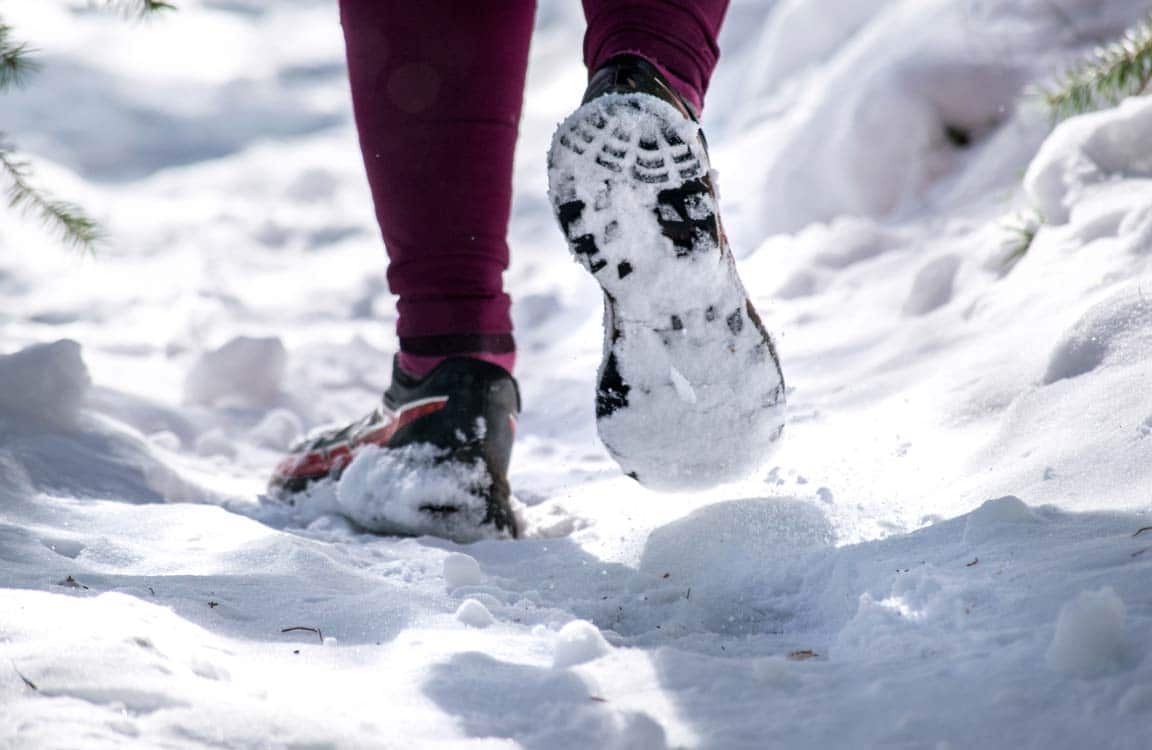
Winter Running Tips for Training in the Cold
Some parts of the country are blanketed in snow and the thermometer hasn’t ventured above freezing in more than a week. For some of you, there will be snow on all the trails until April! Yet, snow and cold don’t have to hinder your training. Here are some winter running tips to help you thrive when it’s cold outside.
Tip #1: Know when to say ‘Uncle’
Mental and physical toughness is a prerequisite for ultramarathon training, but there’s a point at which the cold, snow, and ice can really hinder the quality of your workout. People have different minimum temperatures; yours might be 20 degrees Fahrenheit. If it’s colder than 20 degrees, running outdoors may be miserable for you and not effective. It’s not that you’re unable to run or that it’s necessarily dangerous, but rather that your workout would be more effective if done indoors.
When the air temperature is very low, the air is also dry. As a result, some people find it uncomfortable to breathe deeply. Covering your nose and mouth with a buff or scarf can help by keeping your mouth and throat from drying out as much. People also tend to tense up, keep their arms closer to their bodies, and take smaller steps.
Tip #2: Split your workout
If you have a long run on your training program, or you find it difficult to do hard intervals outdoors when the air is cold, consider dividing your run between outdoors and indoors on a treadmill. For instance, you could complete your warmup and 20-30 minutes of endurance-pace running outdoors, and then come inside to do the remaining time and/or intervals. Splitting workouts this way provides a nice compromise between enjoying an outdoor run and getting your whole workout done without freezing your buns off.
Tip #3: Don’t forget to drink
Everyone worries about dehydration during hot and humid conditions, but running low on fluids is just as dangerous when it’s cold outside. You can’t control your core temperature as well – either to stay warm or keep cool – when you’re dehydrated. Yet, people consistently struggle to find the motivation to drink when it’s cold. Your hourly fluid intake may decrease from hot summer levels because the cold air reduces your sweat rate, but a good rule of thumb is that your cold-weather fluid intake should be at least 2/3 of your normal warm-weather intake. For instance, if you normally drink a full 24-ounce bottle an hour when it’s 65-75 degrees out, you should still drink 16-ounces an hour when the temperatures are in the 30s and 40s.
Tip #4: No Dawdling
When it’s hot outside, you can finish your run and hang out at the trailhead with friends for a while. When it’s cold outside, it’s important to get to someplace warm and get out of wet running clothes as soon as possible.
It’s not so much that wet + cold = “you’ll catch your death”, but more that you’re making your body work harder to maintain your core temperature. If your body is just barely winning the fight against some bug, that added stress can turn the tide of the battle and allow the bug to gain a foothold in your nose, throat, or chest.
► Free Ultrarunning Training Assessment Quiz
Take our free 2-minute quiz to discover how effective your training is and get recommendations for how you can improve.
Enjoying This Article? Get More Free Running Training Tips
Get our coaches' best training advice, delivered straight to your inbox weekly.
Do yourself a favor and make getting and staying warm a priority. If you’re running from a car parked at a trailhead, plan ahead and have a dry change of clothes waiting for you when you get back. Turn the heat on in the car and get into dry clothes for the ride home.


Comments 1
Pingback: The One About "Screaming Barfies" and Other Ailments From Cold Weather Training - CTS